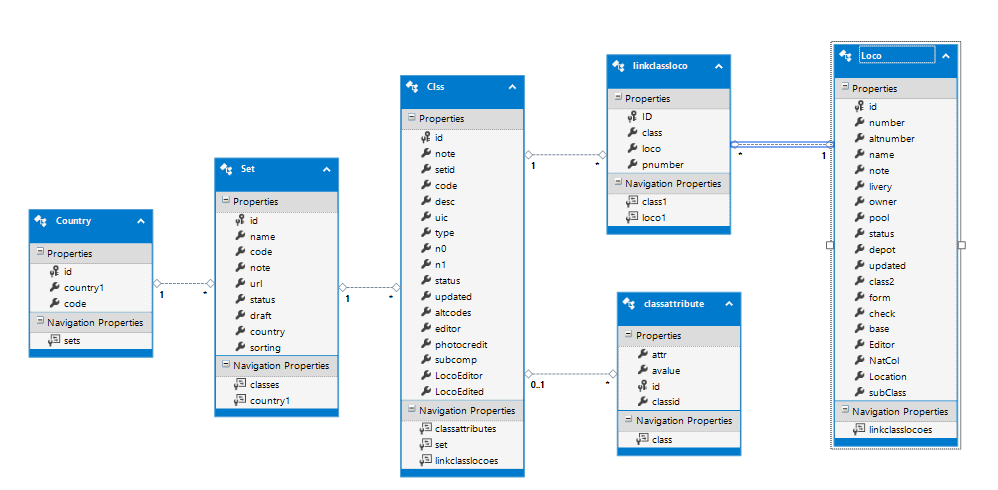The Locolist data is created and edited by users, if you are able to help with editing or creating data, please get in touch through the forum.
If you have editing rights, you will be able to log in and access the editing tools described here.
There are two “test” sets - these are for testing the editing tools. Feel free to edit anything in these datasets and understand thow the editing tools work. The examples given here use the test sets: you can follow along using the test set for examples.
Adding a class
Checking
Copyright
Creating a Dataset
Editing Locolist
Import
Linking
List of Types
The locolist database structure (and terminology)
The database is divided up into sets (aka dataset). A set is a self-contained set of classes and loco’s, users can choose which sets to download to their apps.
The sets contain classes. A class is a group of loco’s with similar characteristics (eg class “47” diesels). Although sometimes we group miscellaneous items together, eg miscellaneous shunters into a “class”. Each class in the database belongs to one and one only set.
Classes have attributes - these are the details of the class, eg Gauge, Power, Wheel arrangement etc.
Classes may have a subset which is a subdivision of the set. For example the UK class 47 class is in subset “Diesels Locos”. Subsets break up the classes into logical groups. We use subsets to break up a set in various ways: 1) by type of loco (eg diesel, electric etc) 2) by company or other division (eg in the UK Trams set, we use subset to break up the different tram companys)
Within the class, we have the loco’s (or units) that make up the class. For simplicity, we refer to loco’s but this includes units etc. Loco's have lots of attributes for each record, these include depot, livery, status, name etc.
Loco’s may be in more than one class: for example, diesel loco 47105 is in three sets: UK, UKP and UK70. Loco's may have different primary numbers in each set. For example the class 47 loco "North Star", in the UK set this loco is listed as 47840, in the UKP set is under D1661 and in the UK70 set 47077, but each refers to the same loco entry. If you edit one of these entries (eg the notes or location field) you will find that the change is reflected in each of the three sets. The rules on what number we set as the primary number varies from set to set (see ......). See Linking
For the technically minded, here is the Entity Diagram:
